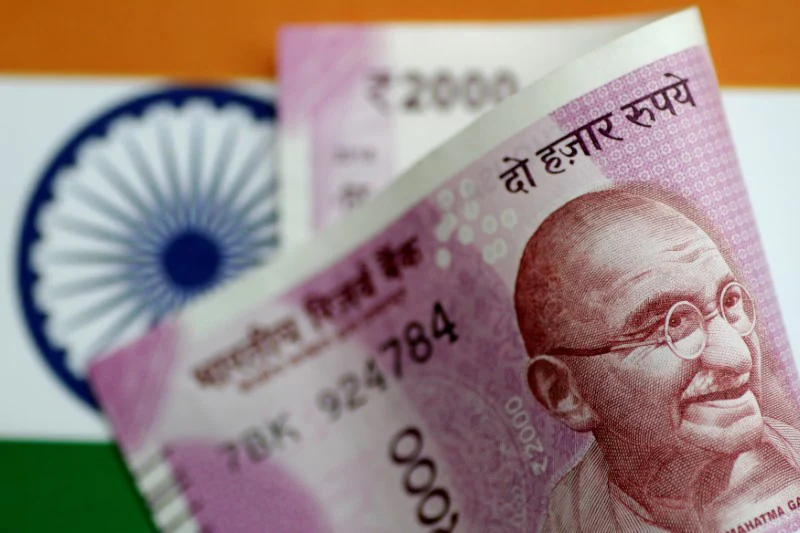- September 1, 2020
- Posted by: Amit Pabari
- Category: Market

Rupee turned heads by emerging strongest amongst its Asian peers by gaining nearly 2.80 percent in the past 7 trading sessions. Now that 73/$ levels are achieved is it the time to buckle up for 72/$?
As mentioned in the previous report, the Reserve Bank of India (RBI) might not be able to protect the rupee from appreciation in the wake of OMOs. On the contrary, after the recent comments from RBI, it is quite evident that the central bank itself is favouring rupee appreciation as it conveyed important message to the market as under:
> In order to bring down the cost of borrowing for the government and flatten the yield curve, RBI announced another round of special OMO’s worth Rs 20,000 crore which shall be conducted in September.
> Favouring to the sudden rupee strength, it said a stronger rupee helps in containing imported inflationary pressure; thereby using rupee appreciation as a tool for justifying the above tolerance level inflation.
Its impact on the rupee
As pointed earlier, RBI might not be able to buy dollars while conducting OMOs as it would nullify the efforts of OMOs in the short term with doubling the rupee liquidity. Hence, it might have to allow the rupee to have its fall which is driven by the robust inflows coming in the capital market.
On the other side, an appreciating rupee also makes import cheaper and therefore controls imported inflation. It is considered an indirect method of raising interest rates without touching the policy rate. Therefore, it is most likely that rupee will continue to strengthen in the medium term before November and technical bounce back within the period shall be expected arising out of negative news or events.
Adding to the confirmation, the RBI’s intervention into the bond market was an unconventional way of signalling its intolerance for rising yields and liberalism for USDINR strength in disguise. To the markets’ surprise, RBI on Friday reconfirmed the market about its intolerance to the rising yields. It sold very little of the benchmark 10-year bond at the rates asked for, making it clear that it would not let market rates rise beyond its comfort zone.
Of the Rs 18,000-crore benchmark 10-year bond on offer, the RBI refused to sell Rs 17,983.75 crore. Of the competitive bids placed by the market participants, the RBI accepted Rs 4 crore, while another Rs 12.26 crore was sold to firms, provident funds, trusts, and retail investors who go for non-competitive bidding.
The underwriters to the bonds bought the rest which is also called devolvement. The central bank devolved the 5.77%, 2030 bond at a cut-off price of 97.24 rupees or 6.14% yield at the auction, while the secondary market yield on the bond at the time of bidding was at 6.18%. The RBI pushing the bond at a yield which is 4 basis points lower than secondary market levels, is something unusual. Typically, an auction is devolved when the RBI chooses not to accept bids that are at yields higher than its comfort level. The event is therefore often interpreted as a yield signal from the central bank where it favours lower yields, and the message delivered last week was a loud one.
Why did RBI have to do this?
Rising inflation prints have damaged market sentiment, which if not rectified would make it challenging for the government to go through its borrowing programme. Bond market fundamentals have deteriorated because of persistently high inflation and the government’s poor fiscal position. As the inflation peaked higher, the bond yields began to rise since then. However, after the 20 bps rise in bond yields since last week, and the market’s reaction to the RBI’s announcement of OMO, it had become necessary for the central bank to show its intent for yields.
Also, in its OMO conducted on Thursday, the RBI bought the 5.79%, 2030 bond, at a yield that was a good 6-7 bps lower than the secondary market level again signalling its favour for lower yields. In order to attain the triple objective of bringing the government’s borrowing cost down, absorbing rupee liquidity in the short run and flatten the yield curve; RBI is likely to bring up more such operations on the table. With such operations, RBI can control the rising inflation without having to do rate hikes.
Outlook:
Since rupee has nearly achieved the previous target of 73.50 and 73.00, the next target for the pair lies near 72.00-72.50 levels given by broad-based dollar decline, the channel of FII inflows hitting domestically and lack of RBI Fx intervention. However, with the escalation of border tensions with China, any technical bounce back near 73.50 levels shall be taken as selling opportunity. With primary trend remaining on the appreciation side, every level is the selling level and an uptick can be taken as bonus points until it breaks 74.20 levels.
Strategy:
Strategy for Export: Exporters are suggested to hedge between 73.00-73.50 levels as the overall risk is on the appreciation side. It is advisable to have a back to back hedging policy maintain a hedge ratio of 80%-100%.
Strategy for Imports: Importers are advised to hedge via options by buying at the money call option in order to keep the downside open.
-Amit Pabari is managing director of CR Forex Advisors. The views expressed are personal.
Leave a Reply
You must be logged in to post a comment.




